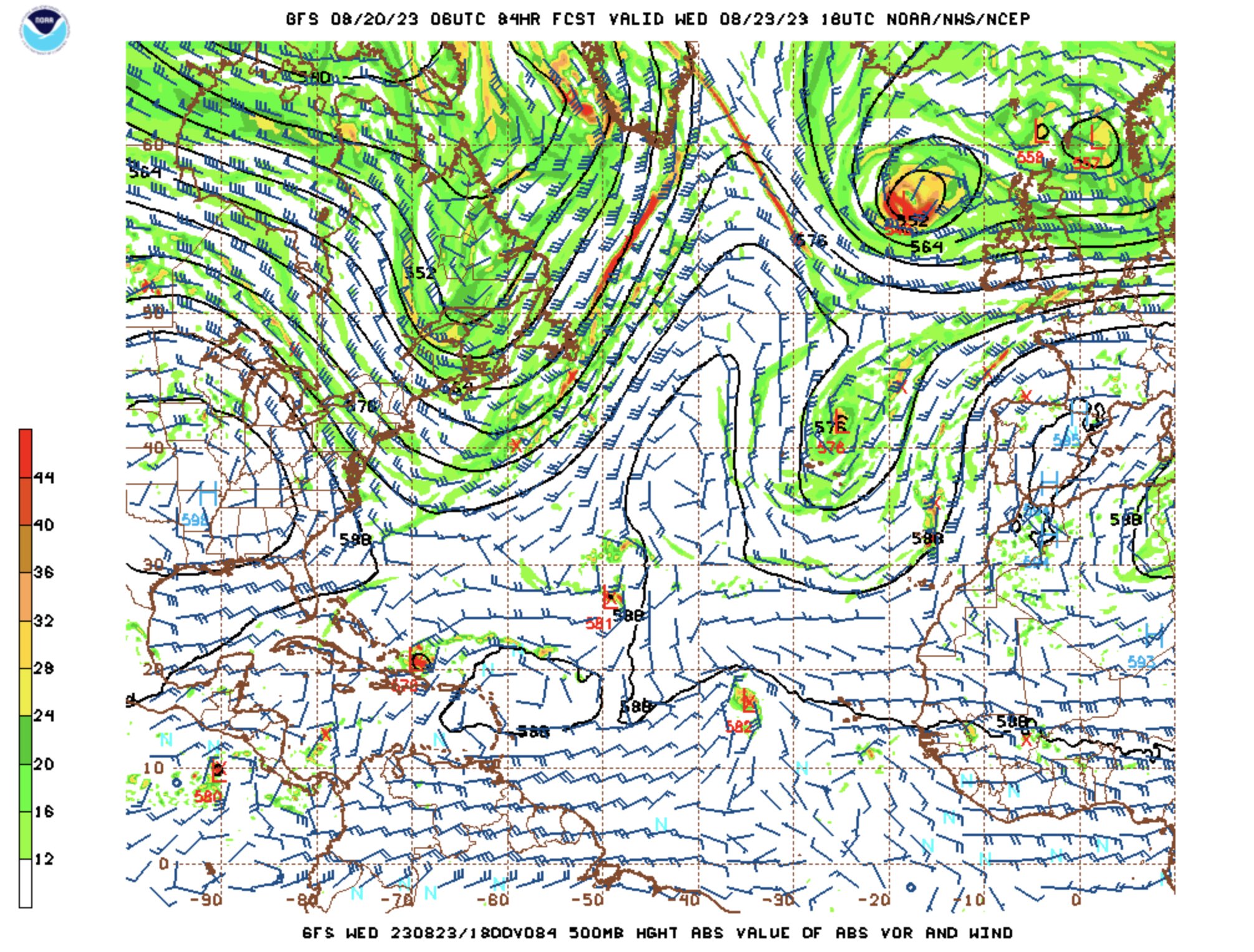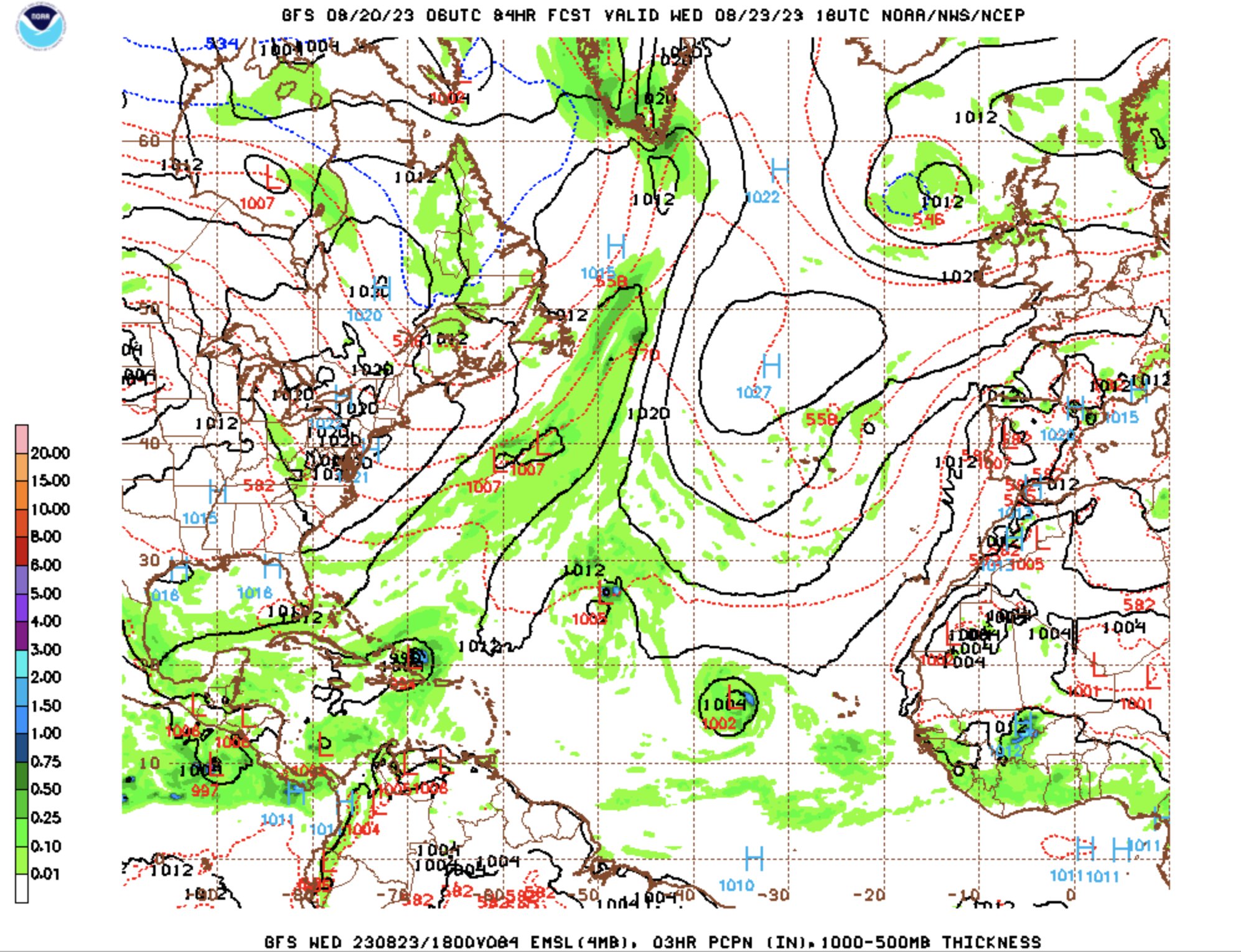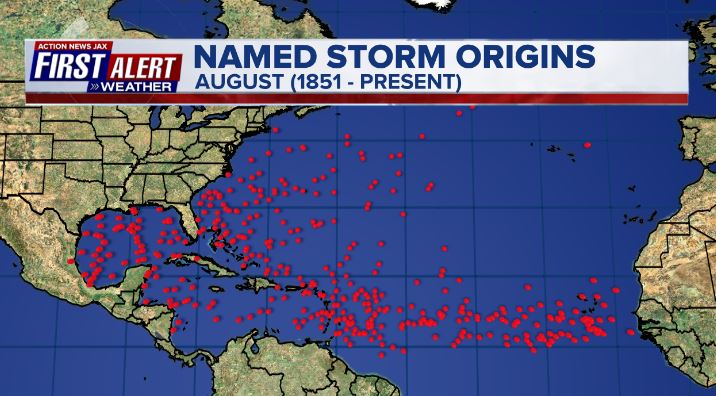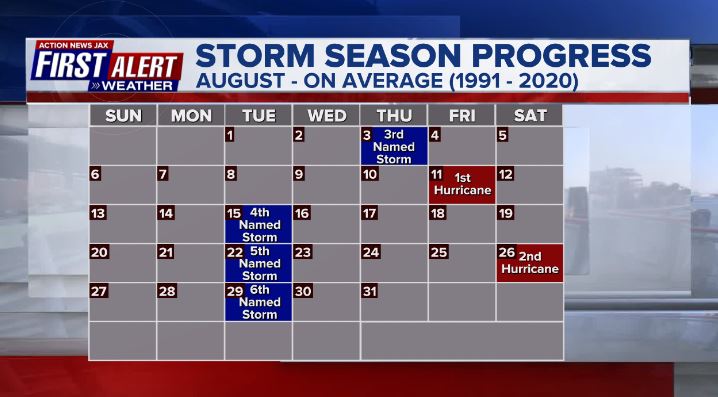Jacksonville, Fl. — The “Buresh Bottom Line”: Always be prepared!.....First Alert Hurricane Preparation Guide... City of Jacksonville Preparedness Guide... Georgia Hurricane Guide.
STAY INFORMED: Get the * FREE * First Alert Weather app
FREE NEWS UPDATES, ALERTS: Action News Jax app for Apple | For Android
WATCH “Preparing for the Storm”
WATCH “The Ins & Outs of Hurricane Season”
READ the First Alert Hurricane Center “Survival Guide”
LISTEN & WATCH “Surviving the Storm” - WOKV Radio & Action News Jax
***** ALWAYS CHECK & RE-CHECK THE LATEST FORECAST & UPDATES! *****
REMEMBER WHEN A TROPICAL STORM OR HURRICANE IS APPROACHING: Taping windows is *not* recommended & will not keep glass from breaking. Instead close curtains & blinds.
Realize the forecast cone (”cone of uncertainty”) is the average forecast error over a given time - out to 5 days - & *does not* indicate the width of the storm &/or where damage that might occur.
*** No direct impacts from the tropics for NE Fl./SE Ga. through this week ***... rip currents & some wave “action” possible at the coast by Sunday into early next week...
The Atlantic Basin:
Overall... conditions over the Atlantic Basin are relatively hostile right now despite all the “action” (a number of tropical waves & named systems). Wind shear is rather strong & the mid & upper level moisture is inconsistent & rather dry across a good part of the Central Atlantic. The tropical cyclone of greatest concern is Franklin since it will impact Haiti & the Dominican Republic soon with very heavy rain. The other obvious threat is Harold rolling into far South Texas. And there are *hints* - inconsistent as it may be - of possible new Gulf of Mexico development in the long run - late Aug./early Sept. which appears to originate from a disturbance moving northward from over or near Central America.
(1) Once tropical wave ‘90-L’ is tropical storm “Franklin” (upgraded late Sunday) over the Caribbean. Westerly wind shear remains quite strong over the next several days so Franklin is disorganized despite almost constantly producing intense bursts of convection. A turn north in the forward movement then N/NE may help mitigate some of the shear by late week. Furthermore...the shear should weaken once the tropical cyclone is north of the Greater Antilles. Franklin has slowed which will allow the rather sharp turn to the north followed by a move over Hispaniola Wed. The land interaction with the mountainous terrain of Hispaniola should cause at least some weakening but conditions appear favorable for intensification once north of the islands as long as the core of Franklin is not too badly degraded. There is some question in the longer range - next weekend & beyond - on whether or not Franklin will get fully captured by a series of troughs to the north or eventually left behind. The initial trend will be northeast once over the SW Atlantic, but we’ll need to keep a close eye on how steering currents evolve & how strong & how far south the troughs will be. As of right now both the GFS & European forecast models indicate a path over the Western Atlantic staying east of the U.S. but have been slowly trending more west. Any threat to the U.S. east coast would seem - as of right now - to be north of Jacksonville.
In the meantime, heavy & gusty rain squalls will impact Puerto Rico & nearby islands followed by increasing very heavy rain & gusty winds centered on Haiti & Dominican Republic Wed. into Thu. where there will be a serious flood & mudslide threat.
A Tropical Storm WARING: Dominican Republic entire south coast from Haiti border eastward to Isla Saona... Haiti entire south coast from Anse d’Hainault eastward to the Dominican Republic border. A Tropical Storm WATCH: Dominican Republic entire north and east coast from the Haiti border eastward and southward to Isla Saona... Turks and Caicos Islands








(2) tropical disturbance - ‘91-L’ - was upgraded to tropical depression #9 Mon. then tropical storm “Harold” early Tue. over the Western Gulf of Mexico. The lack of a well developed center or core + Harold’s swift movement to the west & therefore less time over the warm Gulf are negative aspects for Harold in an otherwise increasingly favorable environment right up to landfall. The midday Tue. landfall on the far southeast coast of Texas will bring heavy rain & gusty winds will impact South Texas & extreme Northern Mexico through tonight including South Padre Island & Brownsville but staying largely south of Houston & San Antonio. The movement is pretty straight forward thanks to a persistent & strong upper level high centered over the middle of the U.S. (causing a Midwest heat wave).
A Tropical Storm WARNING: Mouth of Rio Grande to Port O’Connor, Texas A Tropical Storm WATCH: Port O’Connor to Sargent, Texas







(3) ‘98-L′ was upgraded to tropical storm “Emily” Sun. morning over the Eastern Atlantic after coming off the coast of Africa last Wed. & deemed dissipated Mon. morning. There may be an attempt at some long range re-strengthening over the N. Atlantic if Emily can survive the hostile conditions over the next few days.


(4) ‘99-L′ - over the Central Atlantic & east of the Caribbean become tropical depression #6 & then was upgraded to tropical storm “Gert” about midnight early Monday by the NHC due to satellite derived estimated winds near a very brief burst of convection only to be downgraded again later in the day. Conditions - dry air & wind shear - are not favorable so further strengthening is unlikely. In fact, Gert is still expected to dissipate well east to the Windward Islands (Caribbean) within the next day or two.


(5) another strong tropical wave - ‘92-L’ has just come off the coast of Africa. This wave may very well develop but appears destined to stay far out to the east over the Atlantic.



Right now the Bermuda high at the surface is displaced rather far to the east/northeast over the Atlantic... while a strong upper level ridge of high pressure is parked over the Central U.S. This pattern should more or less hold this week. The set-up is helping to preserve the alleyway over the W. Atlantic... for now.
500mb (~30,000 feet) GFS forecast for Wed., 08/23 (note the well defined alleyway over W. Atlantic):
GFS surface forecast for Wed., 08/23:
Check out the upper oceanic heat content (UOHC) [tropical cyclone heat potential/TCHP] across the SW Atlantic, Gulf & Caribbean. The warmth is very deep. But keep in mind warm ocean temps. alone doesn’t necessarily equate to a “big” hurricane season (need other ingredients & factors to be favorable too):





Water vapor loop (dark blue/yellow is dry mid & upper level air):


July tropical cyclone origins:
Averages below based on climatology for the Atlantic Basin for August:

Wind shear:




Saharan dust spreads west each year from Africa by the prevailing winds (from east to west over the Atlantic). Dry air - yellow/orange/red/pink. Widespread dust is indicative of dry air that can impede the development of tropical cyclones. However, sometimes “wanna’ be” waves will just wait until they get to the other side of - or away from - the plume then try to develop if other conditions are favorable. In my personal opinion, way too much is made about the presence of Saharan dust & how it relates to tropical cyclones. In any case, the peak of Saharan dust typically is in June & July.

2023 names..... “Idalia” is the next name on the Atlantic list (names are picked at random by the World Meteorological Organization... repeat every 6 years). Historic storms are retired [Florence & Michael in ’18... Dorian in ’19 & Laura, Eta & Iota in ‘20, Ida in ‘21 & Fiona & Ian in ‘22]). In fact, this year’s list of names is rather infamous with “Katrina”, “Rita” & “Wilma” retired from the ‘05 list & “Harvey”, “Irma”,“Maria” & “Nate” from the ‘17 list. The WMO decided - beginning in 2021 - that the Greek alphabet will be no longer used & instead there will be a supplemental list of names if the first list is exhausted (has only happened three times - 2005, 2020 & 2021). The naming of tropical cyclones began on a consistent basis in 1953. More on the history of naming tropical cyclones * here *.





East Atlantic:





Mid & upper level wind shear (enemy of tropical cyclones) analysis (CIMMS). The red lines indicate strong shear:
Water vapor imagery (dark blue indicates dry air):

Deep oceanic heat content over the Gulf, Caribbean & deep tropical Atlantic. The brighter colors are expanding dramatically as we near the peak of the hurricane season.:

Sea surface temp. anomalies:


SE U.S. surface map:

Surface analysis centered on the tropical Atlantic:

Surface analysis of the Gulf:

Caribbean:

GFS wave forecast at 48 & 72 hours (2 & 3 days):
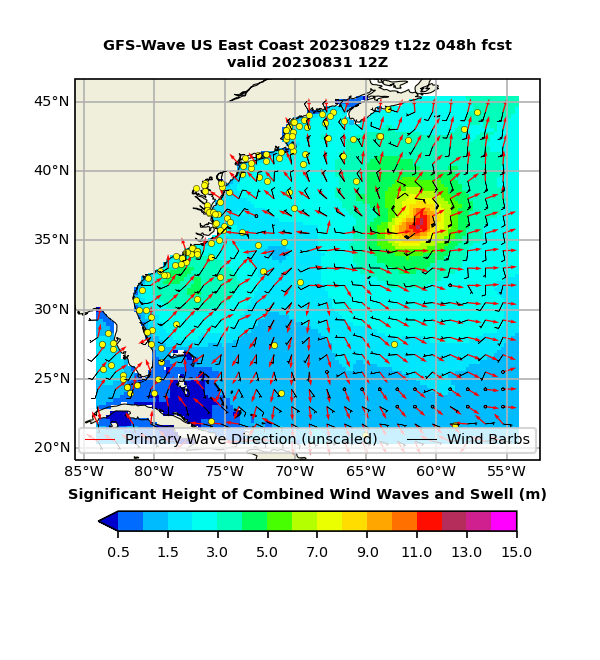

Atlantic Basin wave period forecast for 24, 48 & 72 hours respectively:



East/Central Pacific:
I wrote about “Hilary” near the top after the Atlantic waves. Elsewhere.....





West Pacific:

Global tropical activity:



Cox Media Group



